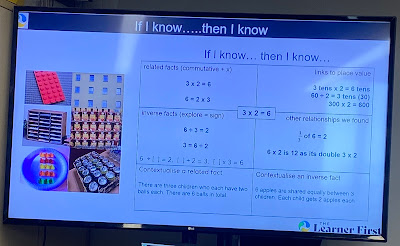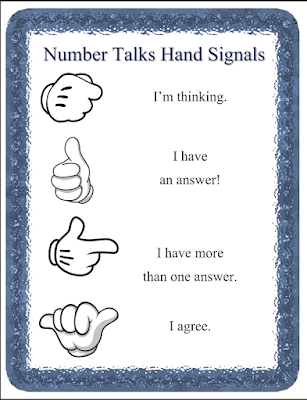The govt provided resources only really address the 'Know' of Know/Understand/Do. Teachers must facilitate the learning. Work books are for the lowest common denominator teacher! Too much bookwork = learned helplessness!
4 components of a comprehensive math programme
- Explicit teaching (feedback and feed forward)
- Positive relationships with maths
- Rich tasks
- Communication in maths
The difference between procedural fluency - the process/how you do it, accuracy, appropriateness, efficiency, and flexibility. Conceptual understanding - relating it to other others, representation, pictorial, abstract.
Would children know that 3 x 4 = 4 + 4 + 4? Or is it rote learned? Or only shown on an array (like in most standardised testing/DMIC tasks)? 190,000 Australian children were asked this question, only 31% knew what repeated addition equation it was.
"Two truths and a lie"
These can identify - which kids need more guided practice from Oxford resource? These can also be the rice task.
Ask the question and give thinking time. You can use hand signals, don't have to physically move to a corner. Use the Talk Moves (these came from 1992 ESOL teaching!) Call on the 'pause' group to repeat what someone in a corner said. No more than 10 minutes! This can become the rich task for the week.
revisitNretain
Reactivate and practice something that has been taught previously. Practise and deepen the knows.
- Daily questions - 3 days worth of questions, 4 questions each day. Keep the same concept for the week. Don't have the 3 days all shown on you slides for kids to see! Do on a white board, I was just encouraging kōrero. The last question could be related to another strand. "I've seen a few wrong answers today, let's see what made them wrong." Pull your weekly focus/objective from the curriculum. These could be planned each term by 1 teacher per term. revisitNretain
- Number talks - SPQ (scrap paper question) Rob's site Creates good discussion. Dot talks + picture talks for subitising. Interestingly enough - studies show subitising does not go past 6! Good practise would see children using estimation to check the accuracy of their 'answer' before they work it out. Eg. 5 x 18 =. "Well, I know it's got to be around 120". They know if they end up with a number way off, it's not going to be accurate. To teach efficiency - 1 + 5 + 9 = 15. Ask, "What number wold you start with?" Kangaroo example, less jumping. Use tally marks to show the kids, how can kangaroo makes less jumps? He's tired! Teaches kids you can move numbers around. Kids are able to analyse their movements.
- Calendar Maths/Maths wall - this is not necessarily something you do in math time, could be a settling after break activity.
- Teacher should be sitting down in teams and planning together!
- SPQ Once a week, a class could bring their SPQ to the team hui and share the thinking of the class. Creates good discussion.
- SPQ - collect in answers and bring back 5 options the next day to discuss
- Number sense is in the eye of the beholder!
- Use whiteboards for deeper thinking







